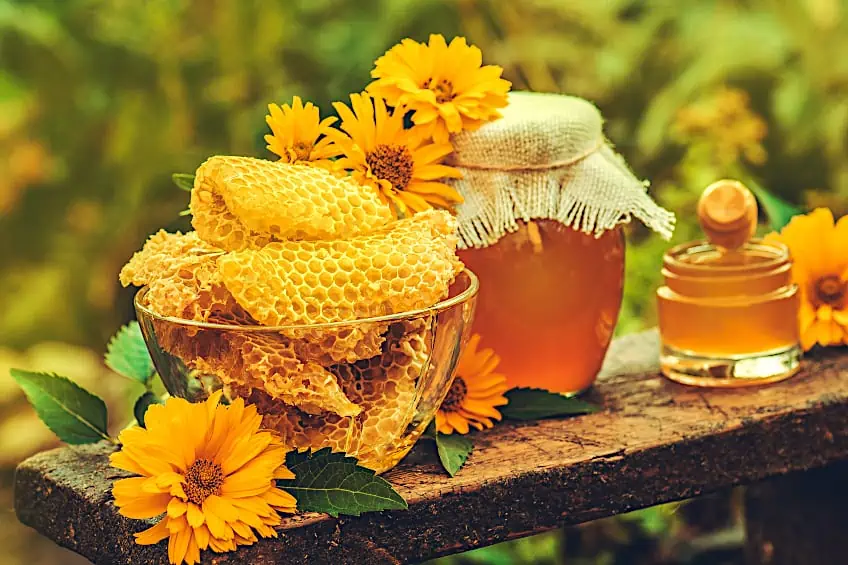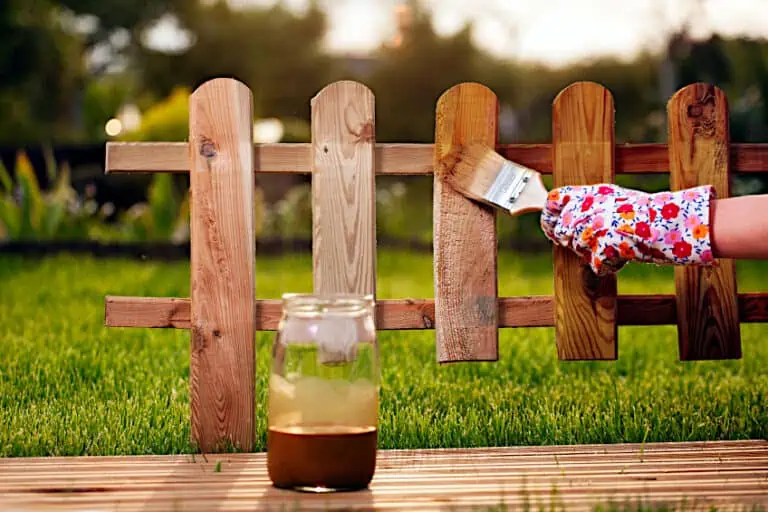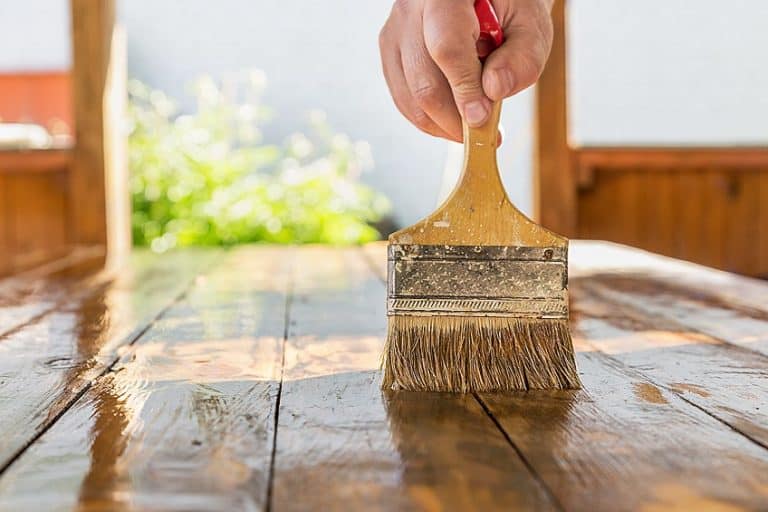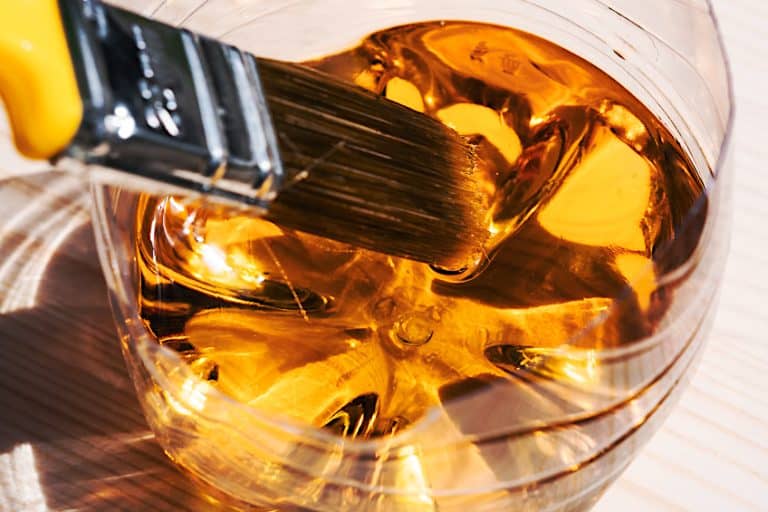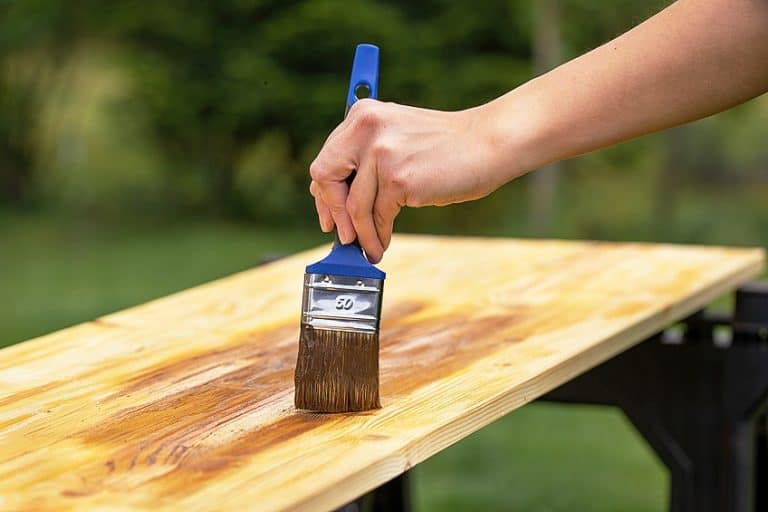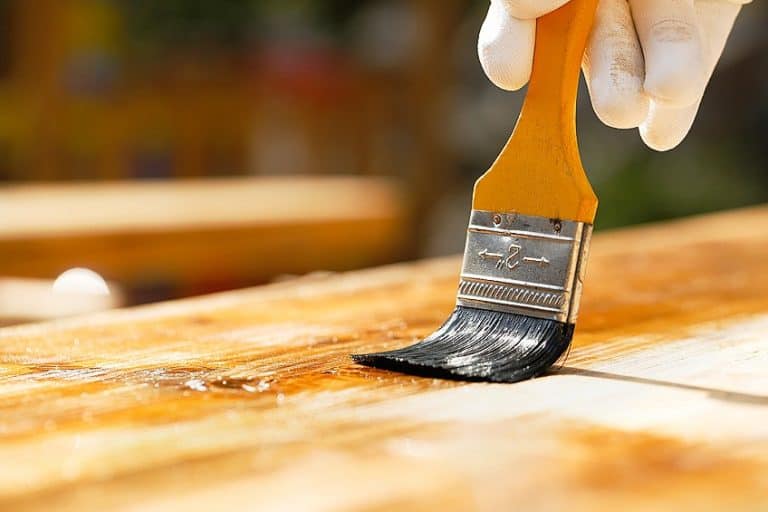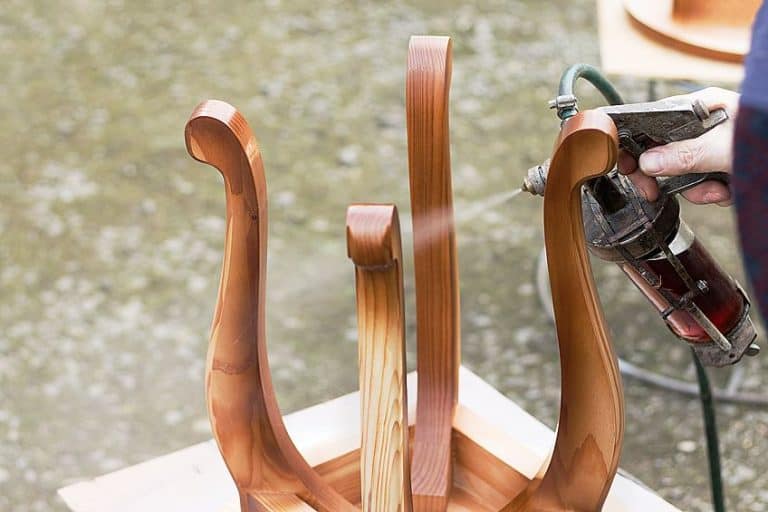Beeswax for Wood – Ideas for a Beeswax Wood Finish
You probably know by now that bees are important for more reasons than just their ability to produce the delicious golden syrup known as honey. Beyond this, bees are also crucial to the sustainability of our ecosystems as they play a vital role in the pollination process of much of our planet’s flora. Better yet, the substances they produce in their hives serve numerous practical purposes beyond the provision of a food source. The beeswax they create has been used for centuries for a myriad of functional applications, from making candles to even sealing and polishing wood. In recent years, beeswax has become increasingly popular as a natural and eco-friendly substitute for synthetic varnishes and sealants used in woodwork.
Table of Contents
- 1 What Is Beeswax?
- 2 How Do Bees Produce Beeswax?
- 3 Beeswax Harvesting
- 4 What Are the Benefits of Using Beeswax for Wood?
- 5 Disadvantages of a Beeswax Finish
- 6 Finishing Wood With Beeswax: A Step-by-Step Guide
- 7 Frequently Asked Questions
What Is Beeswax?
Beeswax is a natural, waxy substance that is produced by honeybees who use it to construct the honeycomb structures in which they both store their honey and incubate their larvae. Beeswax is an incredibly versatile material that humans have found many uses for. This includes candles, cosmetics, toiletries, leather food, and – of course – wood varnish.
And now that you know more about the lattermost function, you might be curious as to how the substance itself is produced by bees.
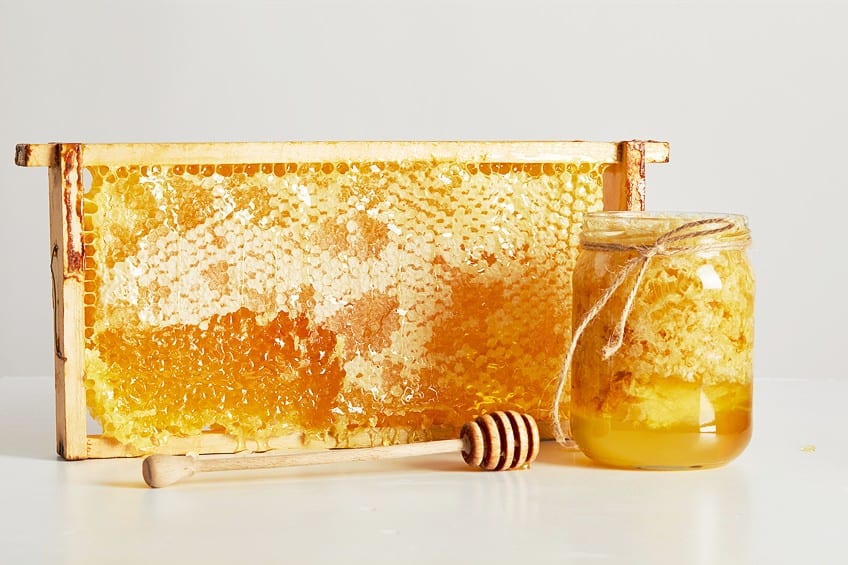
The wax itself is made only by the worker bees of the colony inside the glands below their abdomens. Inside these glands are long-chain fatty acids that break down pollen through a process of metabolization, which then creates a liquified wax compound that they can secrete to produce the hexagonal structures that comprise the inner walls of their hives.
What Is Beeswax Made Of?
Beeswax is made of four primary components. Namely, these are as follows; fatty acids, hydrocarbons, esters, and various minerals and vitamins. You can find further descriptions of these ingredients down below.
Fatty Acids
These are the primary components involved in the production of beeswax. These fatty acids are long-chain compounds most often made up of palmitic, oleic, and linoleic acids.
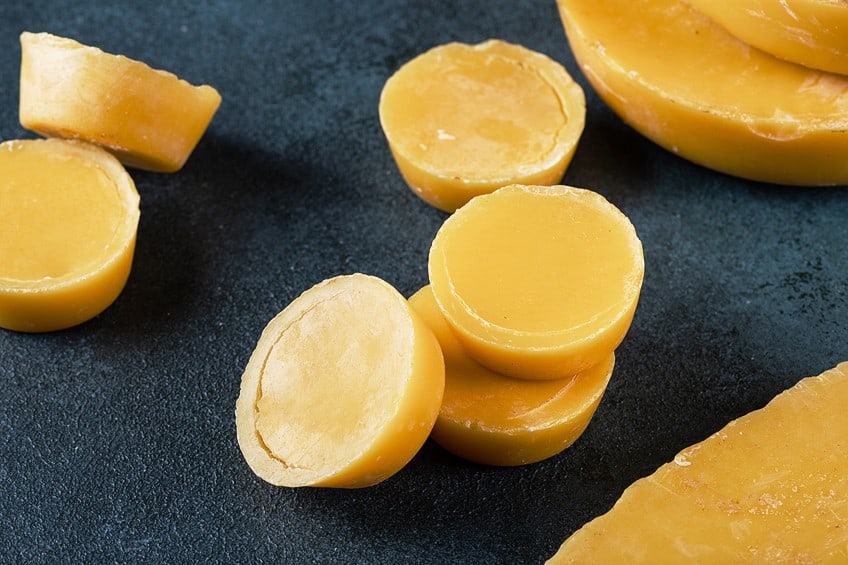
Hydrocarbons
Made from hydrogen and carbon atoms, hydrocarbons are the simplest organic compounds found on Earth. Bees also use hydrocarbons, primarily one known as squalene, to produce beeswax. Squalene is produced naturally within the glands of worker bees.
Esters
Esters are another form of organic compound that forms naturally within the glands of worker bees, which is produced through a reaction between alcohol and carboxylic acid caused by the introduction of water. Worker bees produce an ester called myricyl palmitate, which is a wax ester produced naturally by many other flora and fauna.
The unique chemical and physical attributes of beeswax are rendered through the involvement of myricyl palmitate in its production, which accounts for its water resistance, malleability, and melting point.
Minerals and Vitamins
You will also find trace amounts of various minerals and vitamins inside beeswax, namely vitamin C (calcium) and vitamin A. The presence of these vitamins contributes to the health benefits associated with consuming beeswax and honey.
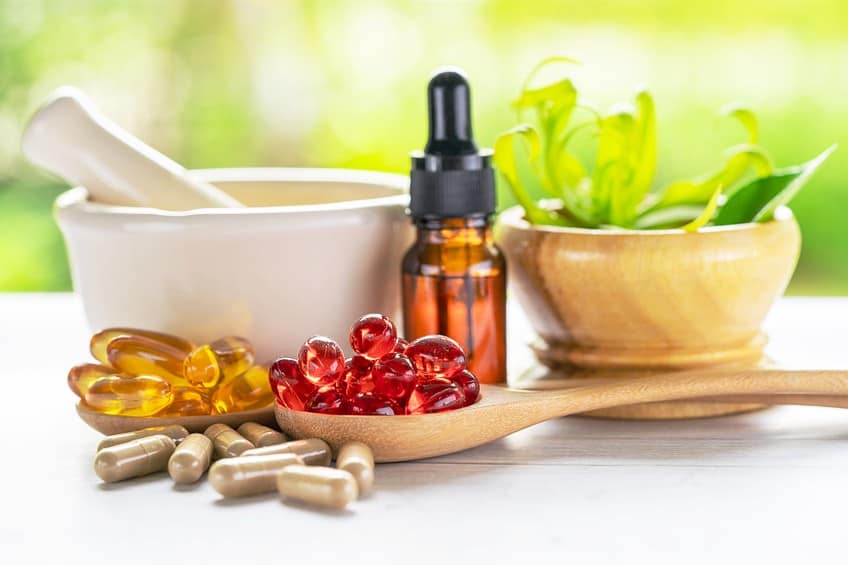
How Do Bees Produce Beeswax?
As aforementioned, beeswax is formed inside the wax glands found on the underside of the abdomens of honeybees. These glands are found exclusively in worker bees who develop them within 12 to 18 days after birth. The glands secrete small flakes of wax that are produced through a process involving all of the previously discussed components.
Bees will gather and use these flakes to then construct the honeycombs in which they store honey and incubate larvae.
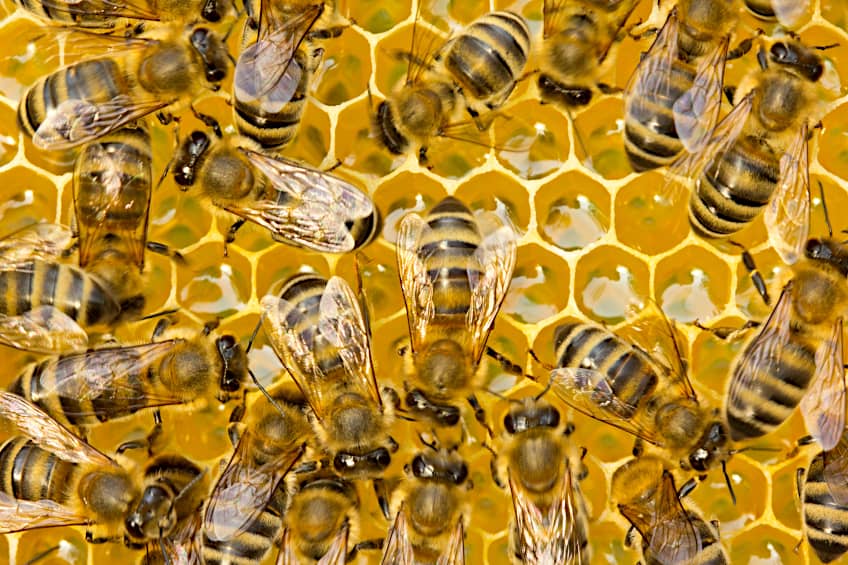
Notably, pollen is not one of the components used to produce beeswax but is necessary to trigger its production. If you want to know more about the complex process through which beeswax is produced, we have laid out the steps below.
Step 1: Wax Production
The production of wax can be catalyzed by a high intake of nectar or honey by the worker bees. The bees use the sugar within the nectar or honey to create wax. The process itself is referred to as wax extraction.
This procedure involves the bees consuming high volumes of sugar and then excreting the wax through their wax glands.
Step 2: Collection
Once the bees have produced their wax, they will collect it from their glands using their opposable mandibles. They then relocate the flakes of wax toward their hind legs, where they are then moved to a specialized structure called the wax pocket.
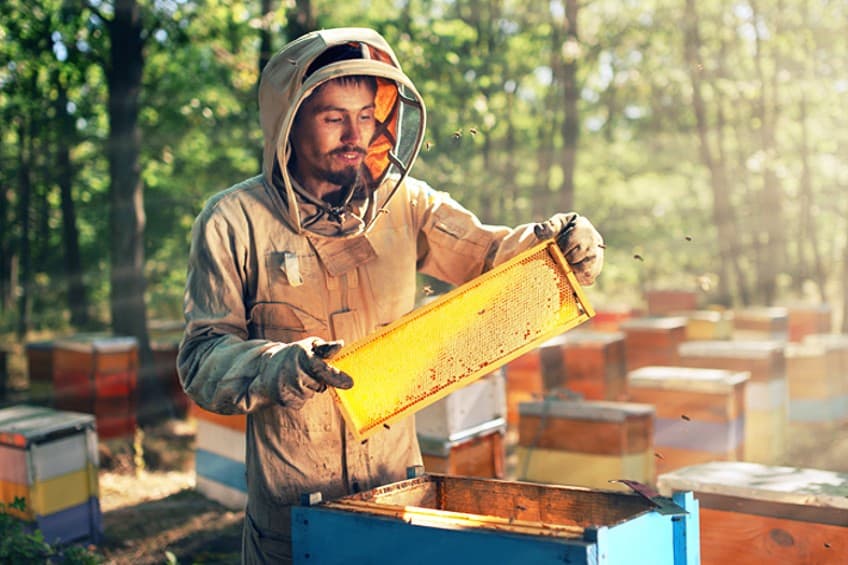
Step 3: Comb Construction
The bees will then use the wax to construct their honeycombs by attaching the wax flakes to the walls of their hive, shaping them into the famous hexagonal cells we are familiar with. The size of each cell is exactly sized to store a single larva.
The hexagonal structure allows for optimal coverage to maximize the surface area.
Step 4: Honey Production
The bees will then fill the cells with nectar, which will cause the wax comb to expand to accommodate the storage of honey after the larva has hatched. The bees then cap each cell with a wax layer to seal it firmly, thus preserving the honey inside. This process is repeated until the honeycomb is filled with honey.
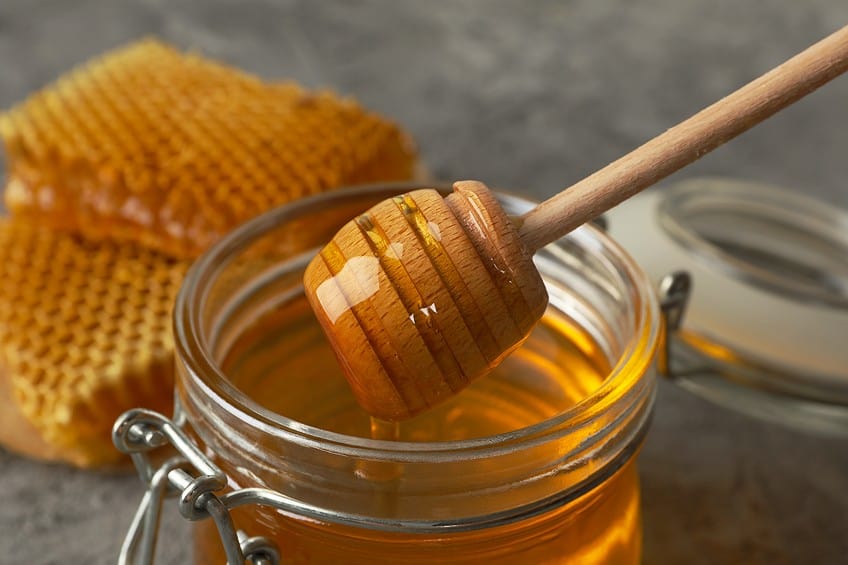
Step 5: Harvesting
Once the honeycomb is at full capacity, beekeepers will then harvest the honey. They do this by first removing the wax caps from each cell and then extracting the honey inside. The beeswax can later be cleaned and purified to remove any impurities that may be present.
The beeswax can then be readied for use in various practical applications.
Beeswax Harvesting
The beeswax that is produced by bees to form their honeycombs can be removed without harming the colony since the bees will simply create more. Extracted beeswax can then be used for all sorts of things. It is particularly a popular ingredient found in many cosmetic products since its properties are particularly good at moisturizing and protecting the skin. Beeswax is also popularly used to create candle sticks candles. This is because they are not only natural and non-toxic but also produce a pleasing honey-like aroma when burned.
As we have established, beeswax is also a great natural alternative to synthetic varnishes. But how is it harvested?
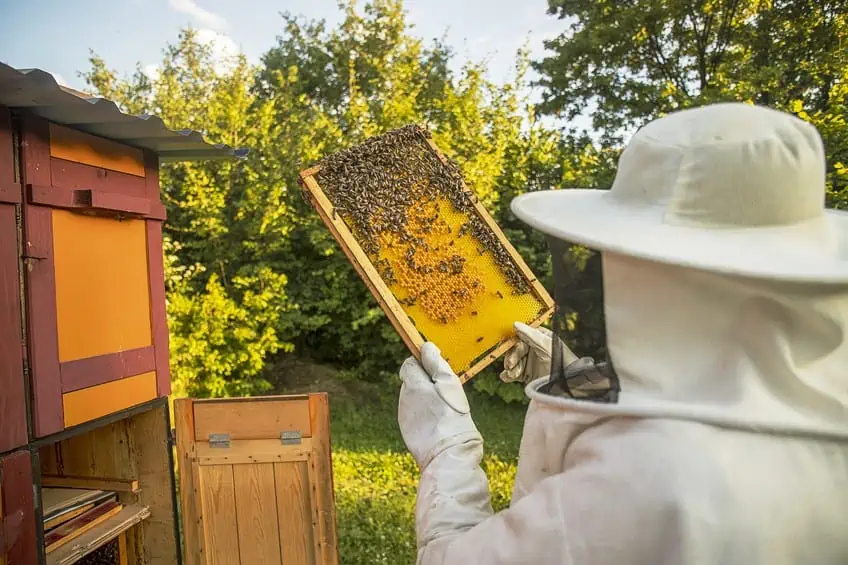
Preparing for Beeswax Harvesting
Before harvesting the beeswax within, beekeepers will need to do a little bit of prep work on their hives beforehand. They first need to ensure that the honeycomb is fully capped as this would be an indicator that the honey inside is ready for harvesting. Beekeepers also need to make sure to not remove too much beeswax or honey since the colony will need enough honey to sustain itself, especially during the winter. Harvesting too much at once can prove detrimental to the well-being and sustainability of the colony.
Besides this, beekeepers must also examine their hives for any indicators that suggest the spread of disease or infestation before harvesting the beeswax. If the hives are not in a healthy state, this is likely to have compromised the useability of the beeswax.
Tools and Techniques for Beeswax Harvesting
Hot knives are the most common and useful tool that can be used to harvest beeswax. The ideal knife to use should be a long and serrated blade. It needs to be heated so that it can slice off the wax caps from the honeycomb without compromising the structural rigidity. A hot knife can melt the wax as if it were butter. Beekeepers can collect the beeswax in a tray or bucket placed below the hive.
The name of this process is called “uncapping” and is the first step in safely harvesting beeswax.
Another more complex tool that can be used in beeswax harvesting is called a steam wax extractor. This machine uses warm steam to melt the wax and safely extract it from the honeycomb. The honeycomb is placed in a basket and then loaded into the machine. Steam is then pumped through the basket, which causes the wax to melt, allowing it to drip down safely into a collection tray. This method cuts down on labor time compared to the use of a hot knife. Its higher cost price, however, leads to it often only being used by larger-scale beekeepers.
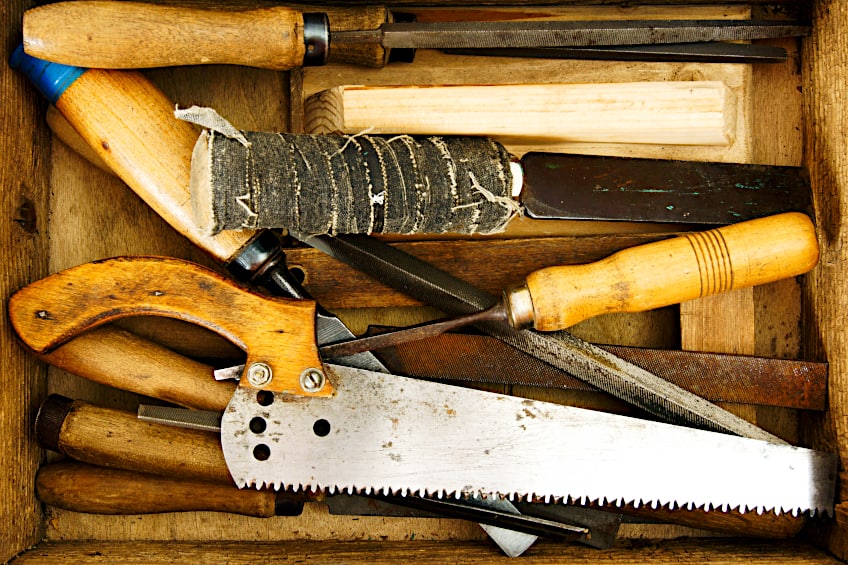
Once the wax has been harvested using either method of extraction, it then must be cleaned and purified before it can be used in any products designed for humans. This can be done by melting the wax and then straining it through a cheesecloth or other fine mesh to remove the impurities until no more honey or debris is present.
The wax can then be cooled and hardened before being used in various applications.
Harvesting Beeswax: Best Practices
Harvesting beeswax requires vigilant attention to detail. Adhering to best practices goes a long way in ensuring that the wax is of high enough quality and that the bees are not harmed in any way during the process.
Here are some good practices that should be implemented when harvesting beeswax:
Using Clean Equipment
All of the equipment used for the harvesting of beeswax should be meticulously cleaned and sanitized to prevent contamination. A sterile work environment is also imperative.
Harvesting Only Fully Capped Honeycombs
Beekeepers should only ever harvest honeycombs that are fully capped, as this indicates that the honey is ready for harvesting and, most importantly, the wax is mature enough for extraction and subsequent use in other applications.
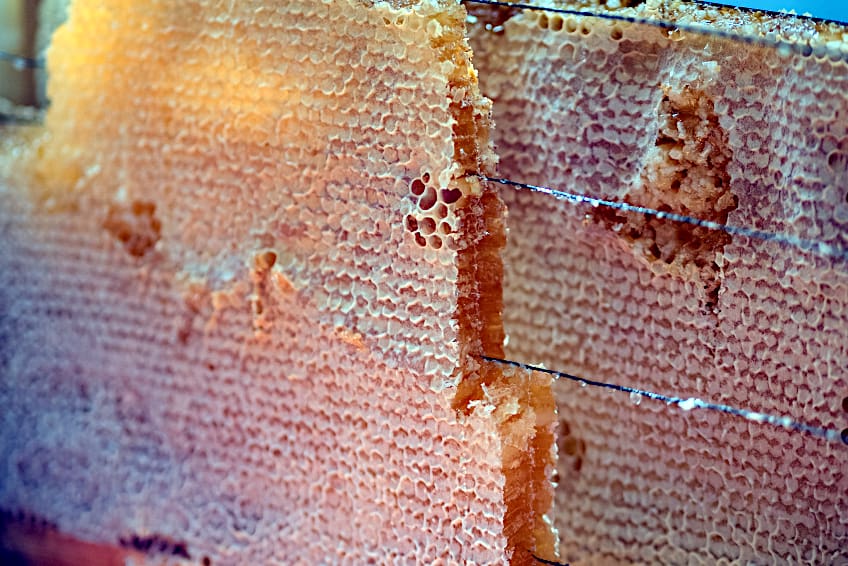
Leaving Enough Honey for the Bees
Beekeepers should never harvest all the honey within a hive. Honey is the primary food source for bees who need it as an energy source to sustain themselves, especially during the winter.
Using Gentle Handling Techniques
Beekeepers need to take care when handling the honeycomb and beeswax, removing it gently to avoid damaging the wax or injuring the bees.
Cleaning and Purifying the Wax
Beeswax should be cleaned and purified before being used so that no impurities make their way into the products produced thereafter. It is ideal to make use of non-toxic cleaning and purification methods as this ensures that the wax is safe for use.
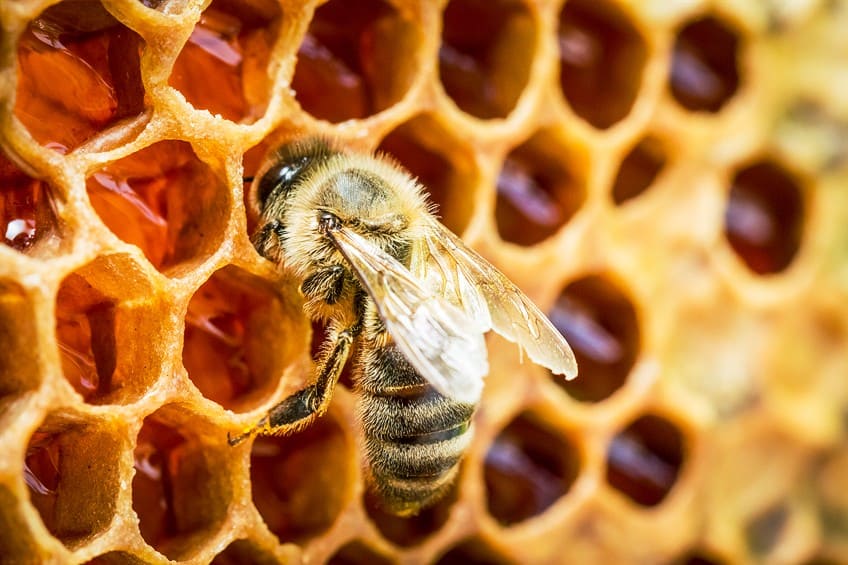
What Are the Benefits of Using Beeswax for Wood?
If the concept of a beeswax wood finish is news to you, you might be curious about how it actually works. More so, you are probably also interested in what makes it a suitable alternative to man-made varnishes.
Here are just a few of the benefits that come with finishing wood with beeswax:
Environmentally Friendly
Beeswax is both a sustainable and biodegradable resource. Unlike most varnishes, it is also a non-toxic substance that is absolutely free from harmful chemicals (you can eat it, so, duh). Unlike your typical varnishes, which are made using a litany of dangerous synthetic materials, beeswax does not emit toxic fumes.
It also does not contribute to air pollution during either the application or curing process.
Enhances the Natural Beauty of Wood
Beeswax does a good job of penetrating deep into the wood grain, bringing out the natural colors and emboldening the textures of the wood. It also gives the wood a uniquely natural and warm sheen that cannot be achieved with synthetic varnishes.
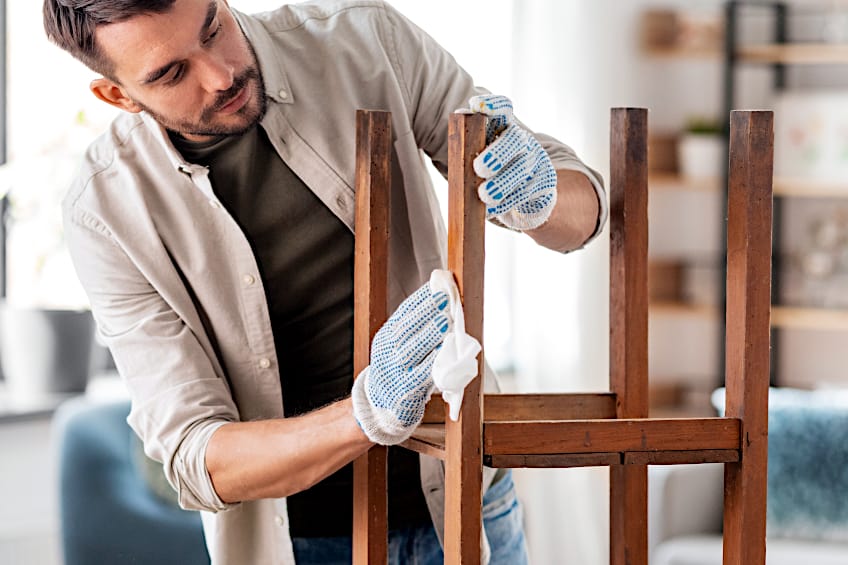
Water-Resistant
Just as you would expect of any synthetic varnish, beeswax creates a waterproof seal on the surface of the wood that helps to protect it from rain, spillage, and moisture damage. It also helps to prevent the wood from cracking or splitting in a climate with frequent changes in humidity.
Durable
A beeswax varnish produces a long-lasting finish that can stand daily wear and tear as well as the test of time. It does not crack, peel, or flake over the course of time like synthetic varnishes. If a beeswax varnish finish is applied correctly and is not frequently exposed to high volumes of moisture, you can expect it to last about five years before touch-ups are required.
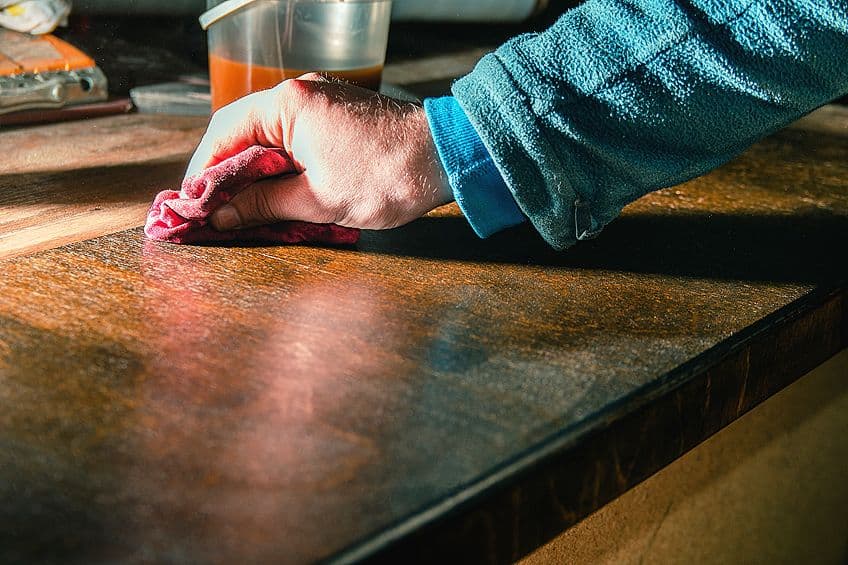
Easy to Apply and Maintain
Beeswax can be applied with a brush or cloth and dries very quickly, making it easy to apply multiple coats within a single day of work. If you want to get a varnishing job done as quickly as possible, this might be your best bet. It can also be buffed to a high shine with a soft cloth or, should you have access to one, a buffing wheel.
Beeswax varnish can also be easily maintained by applying a fresh coat every few years.
Disadvantages of a Beeswax Finish
Though beeswax is an eco-friendly and non-toxic alternative to traditional varnish products on account of their absence of harmful or volatile ingredients, it is not without its flaws. Much like everything else in life, beeswax is not perfect.
There are indeed some disadvantages to using beeswax for furniture varnish.
Notably, one of the main disadvantages of a beeswax finish is that it cannot offer the same degree of durability as some other varnishing products produced using synthetic materials. Polyurethane and lacquer varnishes, for example, have a much longer lifespan and do not require as much maintenance.
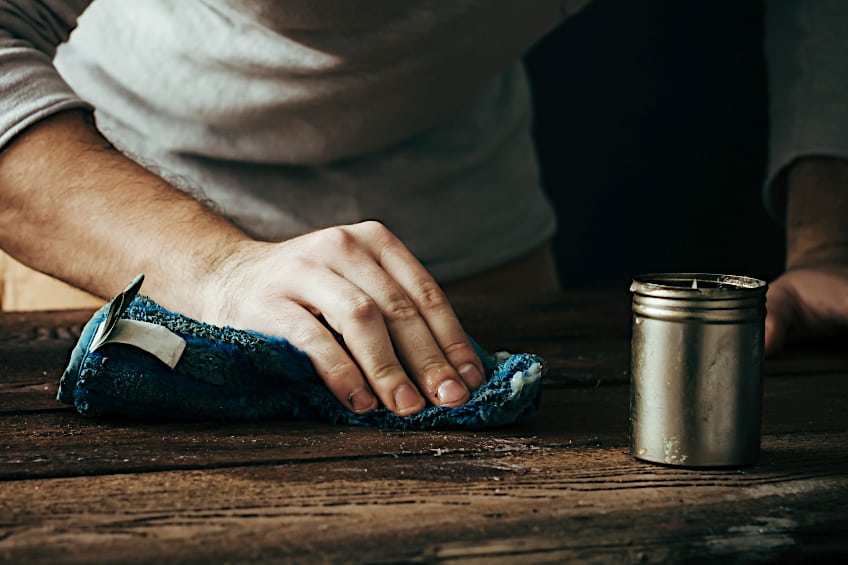
Furthermore, beeswax is not suitable for all types of wood and its properties may not accommodate the requirements of wooden objects based on their location. For instance, beeswax may not be the best choice for varnishing floors since it may make the ground too slippery (something to consider for the elderly).
It is also susceptible to damage from enough heat since it could melt and become sticky. Thus, you may not want to use beeswax for furniture located outdoors.
Finishing Wood With Beeswax: A Step-by-Step Guide
Now we have covered some of the most notable benefits of using beeswax to varnish wood, allow us to educate you on how to use it. You may follow this step-by-step tutorial on how to achieve an excellent beeswax wood finish.
Step 1: Clean the Surface of the Wood
Before you get around to finishing wood with beeswax, it will be important for you to first clean the surface of your substrate thoroughly. Be sure to remove any dirt, dust, or debris with a soft cloth or a brush. If the wood is particularly grubby, you can use a mild soap solution and a soft brush to clean it.
Before you move on to the next step, allow the wood to completely dry beforehand.
Step 2: Sand the Wood
Once you have cleaned the wood and allowed it to dry completely, you may begin sanding it lightly with a fine-grit sandpaper. Sanding the wood will open the pores, preparing it for the beeswax finish. You will want to preserve the grain of the wood, so make sure to sand it in the same direction in which it travels. Once you are done sanding, you can use a soft cloth to remove any dust particles remaining on the surface.
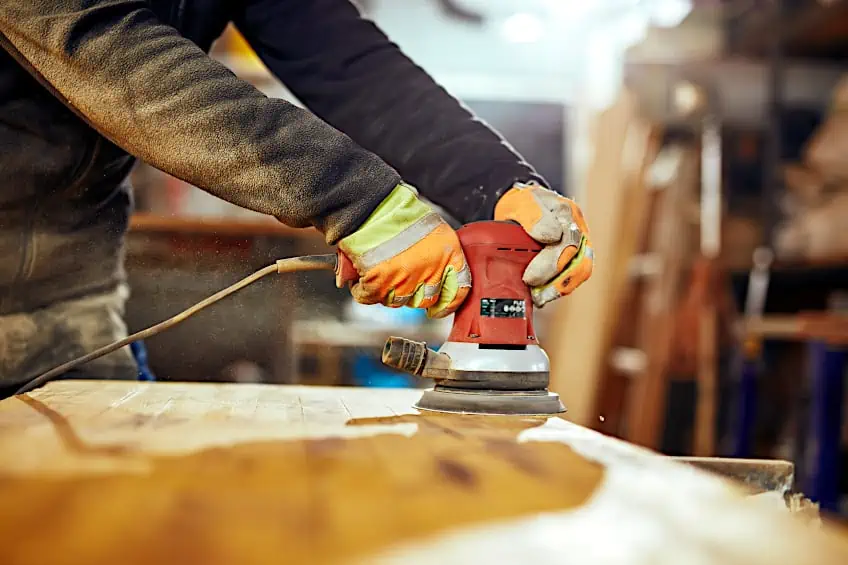
Step 3: Apply Beeswax Varnish
The time has come for you to apply the beeswax varnish. To save yourself time, you can purchase ready-made beeswax varnish. Should you wish to save money instead, you can make your own beeswax for wood. This can be achieved by melting beeswax in a double boiler and adding a natural solvent.
In terms of what best to use as a solvent; turpentine and mineral oil are two excellent options to choose from. You should stir the beeswax and solvent together until they are perfectly mixed.
When finishing wood with beeswax, you should use either a brush or a soft cloth to apply the varnish. Work in small sections at a time and, just as you would during the sanding process, apply the varnish in the same direction as the grain. Use a gentle touch when applying the varnish and make sure that it is distributed evenly. You should allow for 30 minutes of drying time between coats.
Step 4: Buff the Wood
You can get a good beeswax wood polish after the varnish has dried by buffing the wood with a soft cloth or a buffing wheel. Making sure to give your beeswax wood a polish will assist in bringing out the natural shine of the substrate and smoothen out any remaining rough spots. Make sure that you apply pressure gently during this process and that you once again only do so in the same direction as the wood grain.
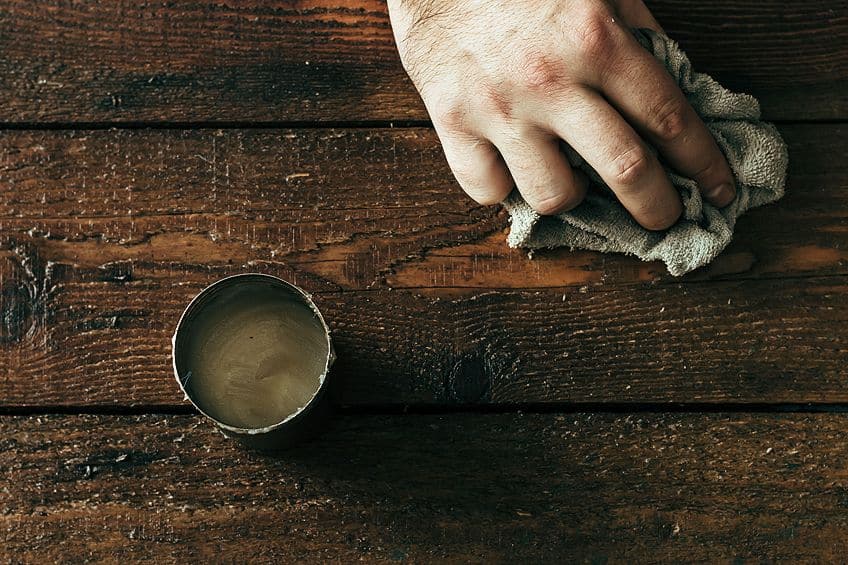
Step 5: Apply Additional Coats (Optional)
If you want to increase the deepness or durability of your finish, you can apply supplementary coats of beeswax varnish after the first. Repeat the same process of applying the varnish, letting it dry for at least 30 minutes, and buffing the wood between coats.
Apply as many coats as you deem necessary, but do not forget that each additional coat will darken the wood further and increase the glossiness.
Step 6: Maintain the Varnished Wood
After finishing wood with beeswax and allowing the coating to dry completely, it may be of use to maintain the wood so as to ensure that the varnish lasts for a long time. Here are some tips for maintaining varnished wood:
- Avoid exposing the wood to direct sunlight, extreme heat or cold, or excessive moisture.
- Remember to clean the wood with a soft cloth or a duster on a regular enough basis to prevent the build-up of debris and dust.
- If the wood gets dirty or stained, sanitize it with a soft cloth damped with a gentle soap solution. You are best off avoiding the use of abrasive cleaners or gritty scrubbers as they are likely to scratch the varnish and spoil the final beeswax wood finish.
- You can reapply the beeswax wood polish whenever necessary. This may need to be done sooner in areas with high traffic.
And there you have it! This has been our comprehensive, round-down of the viability of using beeswax for wood varnishing. It may not always be the best bet but it nevertheless remains an effective eco-friendly alternative to toxic varnishes. Hopefully, you can use this information to inform your decision on whether or not you should be giving your wooden items and furniture a beeswax wood polish.
Frequently Asked Questions
How Long Does Beeswax Last?
Beeswax is no different from honey in that it can be stored and kept in a usable state indefinitely if kept under the right conditions. You only need to keep it in a cool and dry space. You can also heat up beeswax and then reuse it.
How Long Does Beeswax Last as a Varnish?
This depends on the volume of traffic your beeswax finish will see and the climatic conditions it is put through. If whatever you have varnished with beeswax is located outside and subject to frequent heat or rain, you may need to apply touch-ups within roughly two years. In low-traffic areas with little exposure to the elements, your beeswax wood finish could last for as long as five years before it needs a touch-up.

I have been into woodworking since 2005 and woodturning since 2011. Because of my love for wood and woodworking, I started woodhappen.com to teach other enthusiasts about how to finish and seal wood, the best woodworking tools, the different types of wood, and everything else related to woodworking! Read more about me here.

